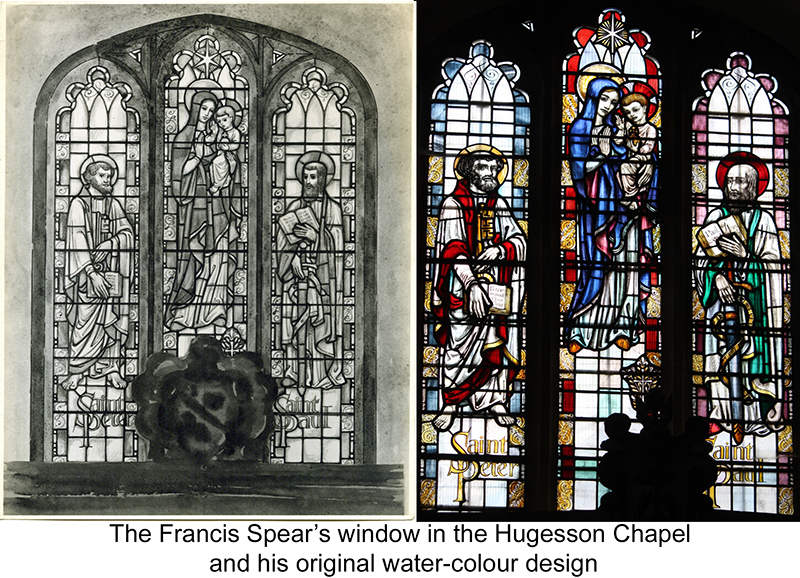Lynsted Church Francis Spear Windows (1950)
Visit the Lynsted Church contents page
Read about the war damage on 15th August 1940 - "Black Thursday"
RESTORATION OF THE HUGESSON CHAPEL WINDOW
Black Thursday
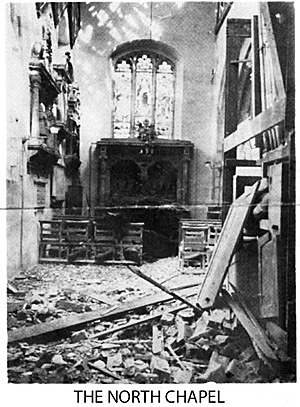 Thursday 15th August 1940, often known as "Black Thursday", saw the heaviest fighting of the Battle of Britain.
Thursday 15th August 1940, often known as "Black Thursday", saw the heaviest fighting of the Battle of Britain.
For the first time all the Luftwaffe's air fleets were deployed in one raid. Both sides were pushed almost to their limits.
Attacks ranged from Kent to Suffolk, to east Yorkshire and all along the south coast. There was also a large air battle off the Firth of Forth in Scotland.
The Luftwaffe flew over 2,000 sorties and lost 75 aircraft. Fighter Command flew 974 sorties during the daytime and lost 34. Considering the scale of the German attack, the damage caused was slight and no serious gaps had appeared in the defences. In contrast one of the German air fleets suffered so severely that it never made another daylight attack during the entire Battle of Britain.
On this day Lynsted Church received a direct hit.
Bomb explosive officers found that, luckily, the bomb had a defective fuse. Instead of detonating a fraction of a second after hitting the roof, as they were designed, this one instantly exploded thus saving the church from far worse damage or even demolition.
Restoration
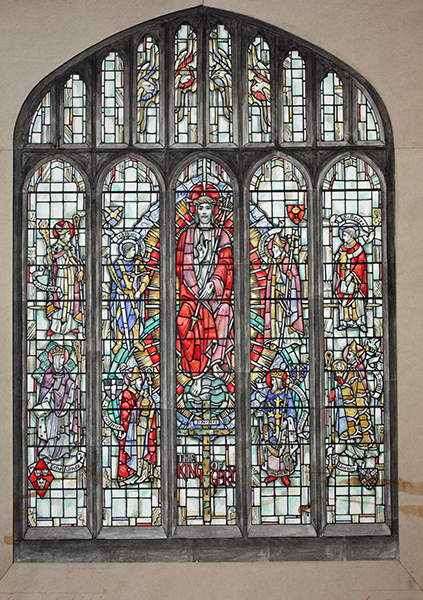 For several years the church remained in a damaged state.
For several years the church remained in a damaged state.
Tar-paper covered the damaged windows, including the big, east window (see right).
The hand of the clock dangled loose and swung in the wind.
The Rev. David Reeve, a young, energetic man, was the driving force behind the restoration during the 1950's.
Francis Howard Spear ARCA, FRSA (1902-1979) was commissioned to design the new east and Hugesson Chapel window. His work is known for its beauty and innovative qualities.
Examples of his stained glass can be seens in many churches including Glasgow and Edinburgh Cathedrals and the V&A Museum, reflecting the respect in which he was held as an artist-craftsman.
He taught lithography and stained glass at the Royal College of Art, where he had also been a pupil, and was recognised as a leading lithographer during the inter-war years, with several of his lithographs being held by the Devenish Collection.
Alan Brooks' book contains the following - "An east window of 1950 for SS Peter and Paul, Lynsted, Kent, contains an unusually lengthy attribution (out of normal eyesight) which says 'This window was designed by Francis Spear. Painted by Joan Cleburne for Lowndes and Drury of Fulham who also cut and glazed'."
| East Kent Gazette, 28th October 1949. |
| New windows.- Mr Francis H. Spear, the celebrated stained glass artist, has started work on the windows which will replace those damaged at Lynsted church during the war. The east window of the chancel will depict "Christ in Glory, surrounded by some of the English Saints, and the east window of the Hugesson chapel "The Madonna and Child, flanked by St Peter on one side and St Paul on the other." |
Images
Francis Spears original watercolour for the East Window (above) was one of several that he presented to the Church for decision. He also submitted watercolours and pastels. The installation included fragments from the original window.

Before and after - detail
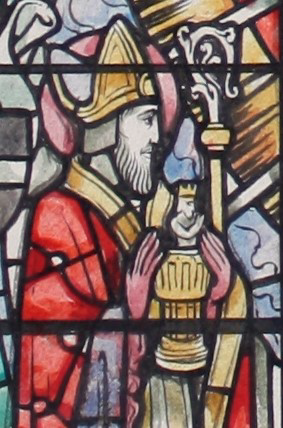
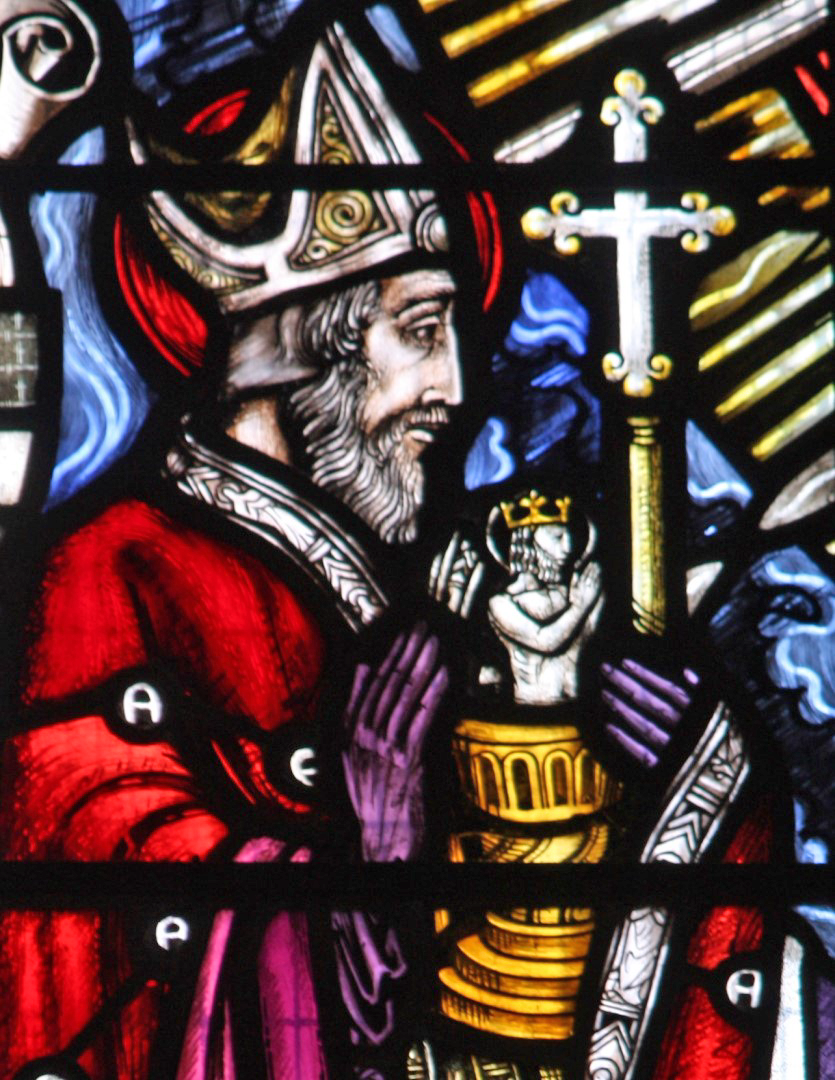
[With thanks to Lis Heriz-Smith who compiled this story for a display during a Festival Weekend held at the Church on 17th-18th September 2016; Thanks also to Alan Brooks whose research on the many stained glass windows of Francis Spear, was shared with the Society. Alan published his research in 2012 - "The Stained Glass of Francis Spear"]

